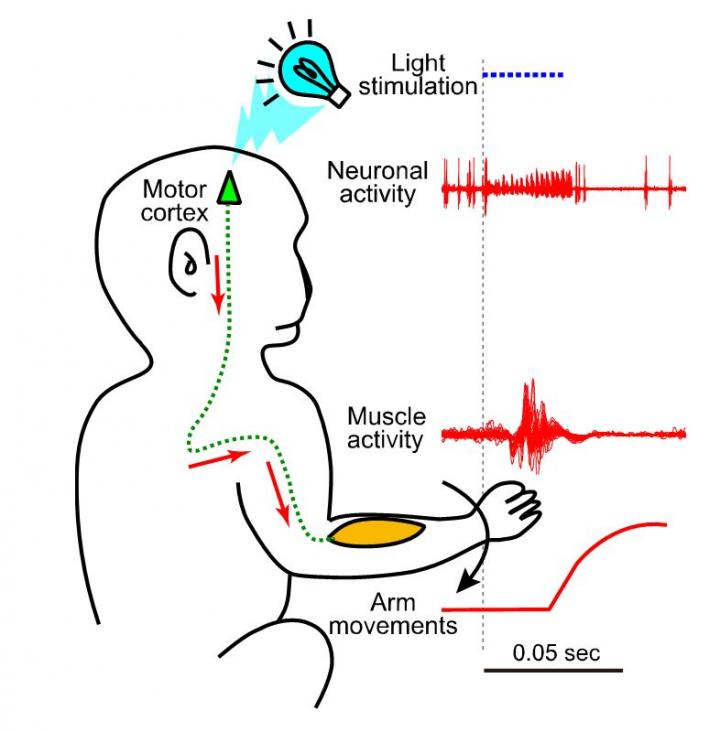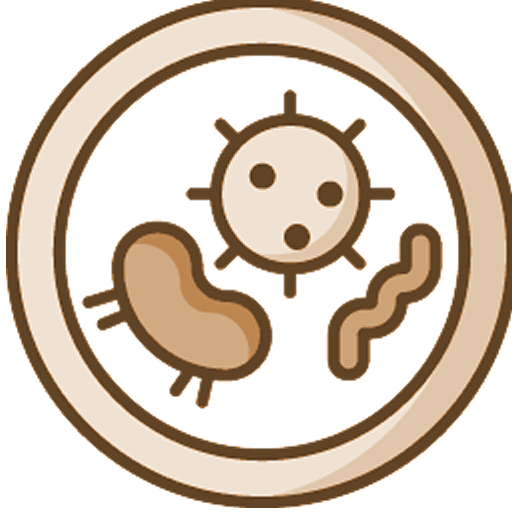
Credit: Atushi Nambu
Optogenetics is a recently developed technique that can control cellular functions by illuminating lights to the cells in which light-sensitive proteins are expressed by gene transfer. Optogenetics enabled us to activate or inhibit a specific population of neuronal cells and revolutionized stimulation methods. It has now become an indispensable tool for investigating brain functions. So far, most studies using this technique have been performed in rodents, whereas trials to modify behaviors in monkeys have ended up in failure, except for a few studies targeting eye movements.
The research group lead by Professor Atsushi Nambu at National Institute for Physiological Sciences and Professor Hajime Mushiake at Tohoku University, has succeeded in inducing arm movements in Japanese macaque monkeys by using optogenetics. This study will be published in Nature Communications.
First, the research team developed an adeno-associated viral vector that effectively expresses a light-sensitive protein, channelrhodopsin. The team injected the viral vector exactly into the arm region of the motor cortex in which electrical stimulation can induce clear arm movements. The team also developed an optrode that can record neuronal activity and apply light and electrical stimulation separately. The optrode was inserted into the motor cortex, and light stimulation was applied (Figure). Light stimulation through the optrode effectively activated neuronal cells expressing channelrhodopsin, and induced muscle activity and clear arm movements, which are comparable to those induced by electrical stimulation through the same optrode.
This study has opened the door to optogenetic studies in non-human primates and toward clinical application in human patients, such as optical deep brain stimulation (DBS).
###
Media Contact
Atsushi Nambu
[email protected]
Original Source
https:/
Related Journal Article
http://dx.





